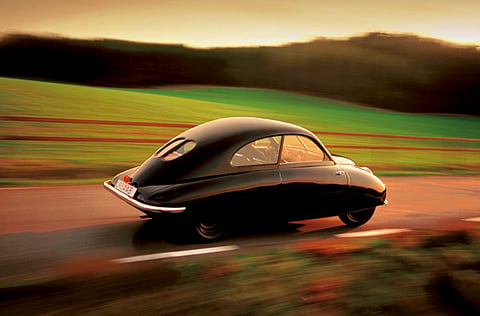Saab 92
During its 20 years under GM’s ownership, Saab struggled to turn a profit — but it retained a loyalty among buyers

With a heritage rooted in the aircraft company, Svenska Aeroplan AB, it was hardly surprising that the Saab 92 was the most streamlined vehicle in the market when launched in December 16, 1949. It boasted a drag coefficient of 0.32 — that’s low even by today’s standards. The Swedish carmaker has long since been associated with quirky designs and innovation.
It was one of the first to popularise the turbocharger and front-wheel drive. But, rather than cars, it might have been making motorbikes or (gulp) kitchen units. When the Saab factory was built in 1938 in Trollhättan, Sweden, with the Second World War on the horizon, the Royal Swedish Air Force needed aircraft and Saab began building bombers and fighter planes. After the war, it built passenger planes; the 90 was a small aircraft that could carry up to 30 people while the 91 was a small, private jet.
It turned its attentions to the affordable car market with the 92. It had a 750cc two-cylinder two-stroke, transversely mounted engine ahead of the front axle. It also boasted a safety cage for the passengers that would help protect them in case of an accident. Two cars were entered in the 1950 Monte Carlo rally and to their credit, both finished the arduous event.
Then in 1955, the 93 with a three-cylinder two-stroke engine and distinctive fastback profile (giving it instant recognition on the road) was announced — and it would be the first model to be officially exported, mainly to the US. Americans loved it, so much so that Saab designed its next model specifically for them. It was the Gran Turismo 750 and it took pride of place at the New York motor show in 1958.
With twin carburettors and a 50bhp motor, not to mention being the first model to have factory-fitted seat belts, it was a massive success. By the end of the Fifties, Saab also had a station wagon, which could seat seven adults, in its line-up. Then, in 1960, came its most successful model — the 96. It had a production run of 20 years and gave the company presence in the international market while the 99 was the first Saab to feature the manufacturer’s trademark wraparound windshield.
The Seventies and Eighties saw the 99 Combi Coupé and more importantly, the 99 Turbo. Americans, again, lapped them up, as they did the 900 Turbo Aero — the world’s first car to offer a 16-valve turbo engine. In 1990, General Motors bought half of Saab’s automotive division, but during its 20 years under GM ownership (it bought the company outright in 2000) Saab hardly made a profit.
Attempts to introduce new models to the US failed and by 2008, GM was in financial woe. It ditched the marque, which was then linked to Koenigsegg before Spyker Cars snapped it up. It’s changed hands again since and is currently owned by Chinese/Japanese consortium National Electric Vehicle Sweden AB (NEVS) which plans to bring Saab back from the dead by launching an electric and petrol version of the popular 9-3 by 2014.
Sign up for the Daily Briefing
Get the latest news and updates straight to your inbox



